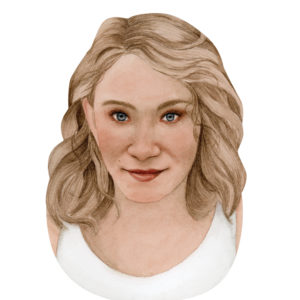Dina Bennett’s promotion to executive director of the American Jazz Museum marks a full-circle moment for her. Bennett’s professional career as a music historian began in 1999, when she served as an education intern for the museum, a then-fledgling organization.
Most recently, Bennett, who holds a doctorate in ethnomusicology, played a pivotal role in the launch of the National Museum of African American Music in Nashville as an inaugural curatorial director. Bennett returned to KC three years ago after securing the position of director of collections and curatorial affairs for the American Jazz Museum. She was later promoted to deputy director and interim executive director.
Now, Bennett is poised to lead the American Jazz Museum, along with the nearby venues it manages—The Blue Room and historic Gem Theater—into a new chapter. We spoke with Bennett to learn more about her vision for the museum’s future, her favorite artifacts there and more.
What inspired you to pursue a career in music history? My father was a musician. He and his brother had a band years ago, so music was always a huge part of my life and my childhood.
Then I went to an arts camp and they offered me a scholarship to take piano lessons because they saw some musical ability in me. I didn’t major in music initially, but it was later—when I went back to graduate school—that I decided to major in ethnomusicology.
What initially drew you to the museum? I always knew I didn’t want to be a tenure-track faculty person. I wanted to be working with the artifacts and the culture. I decided I’d work in the museum world and in African American music.
I’m from Topeka, so I was familiar with the 18th and Vine area. When it came time to pick a dissertation topic, I decided I would do it on the new museum they had built and the revitalization of this historic district. In 1999, I did an internship in the education department and returned in 2001 to do my field work. Then, I returned in 2008 as director of collections. The museum means so much to me and has been such a huge part of my life.
What are some of your favorite museum artifacts? The Charlie Parker plastic saxophone is our prized artifact. We’re so proud of him and his extraordinary musical ability. We have several wigs of Ella Fitzgerald’s, which I think is pretty fun.
We have saxophonist John Coltrane’s dog tags, who served in the Navy, and a letter he wrote to congressman John Conyers lobbying for Congress to consider jazz a national treasure. Eventually, in 1987, Congress passed a resolution. Jazz is an indigenous art form to America, so to actually have Congress pass a resolution declaring it as such is extraordinary.
The American Jazz Museum, The Blue Room and the Gem Theater are anchors of the 18th and Vine District. How do you plan to continue building on that? I’d like to keep bringing in dynamic, changing gallery exhibits, but I want to expand the story within the permanent gallery. I want to keep promoting robust educational and public programs. I want to lean into being the American Jazz Museum. That means that we should be all things jazz. I look forward to broadening that story.
When you say broadening, do you mean expanding it beyond the narrative of Kansas City’s own history? Beyond the jazz masters. When I was a curatorial director for the National Museum of African American Music in Nashville, we went from 1619—when the first Africans were brought to America as slaves—and brought it all the way up to hip-hop and everything in between.
For me, the exhibition needs to start with Africa and move into ragtime, minstrelsy and blues. Let’s talk about Dixieland, swing and Latin jazz more. Let’s bring it up to Jazz at Lincoln Center and Wynton Marsalis and include some of the most current artists. Let’s focus on the evolution of the genre. Music is the lived experience of a people, so you’re also telling the history of the people who created these genres.
Where do you think the museum has fallen short in the past? What are some things you want to improve? I don’t think we have enough things for children. We have our popular long-standing program, Jazz Storytelling, which we do every First Friday, and our Jazz Academy program that meets every Saturday. But what about things within the permanent exhibit? We have a space where you can explore melody, harmony and rhythm on the mixing boards, but there aren’t many other things for children. I’d like to build on that.
Is there an album or artist you’ve been listening to a lot of lately? Being a music historian, I often listen to a lot of old music. I’ve been listening to the album Two Steps from the Blues by blues singer Bobby “Blue” Bland.






